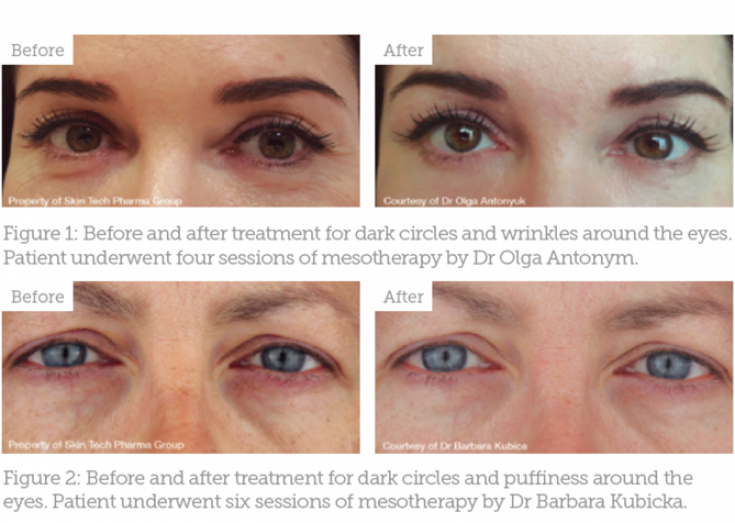The water balance of the skin is determined by proper water supply and the prevention or reduction of transepidermal water loss (TEWL) in the stratum corneum (SC) provided by fats and natural moisturizing factor (NMF). The stratum corneum of the skin contains mature keratinocytes and consists of an average of 15 cell layers. Moisture in the skin is retained by amino acids and other osmolytes such as glycerol, lactic acid, taurine and urea.
The natural moisturizing factor is found only in the cells of the stratum corneum of the skin and consists of substances capable of binding water. Maintaining the proper level of hydration is important for the proper functioning of the various enzymes that function in a humid environment.
- How does the loss of fluid affect the skin
- The components of the skin and their role in maintaining water balance
- Topical products and substances for maintaining skin water balance
- Cosmetic treatments to improve skin hydration
How does the loss of fluid affect the skin
Most patients with dry skin do not have any underlying conditions, however, factors such as hot water, cleaning products, pollution, frequent flights, air conditioning, and seasonal low humidity can cause skin dehydration.
Severe dehydration negatively affects the condition of the skin. At the same time, drinking enough water is often not enough to smooth out wrinkles and prevent aging associated with genetic predisposition, photodamage and exposure to environmental factors in general. However, topical emollients can improve the skin's barrier function and appearance.
Fats make up about 10% of the weight of the stratum corneum and play an important role in maintaining the integrity of the skin's waterproof barrier. Dry skin is characterized by abnormal desquamation of corneocytes, which leads to the appearance of irregularities on its surface.
Drinking enough water is often not enough to smooth out wrinkles and prevent aging associated with genetic predisposition, photodamage and exposure to
The skin is approximately 30% water, which helps maintain its elasticity, firmness and volume. Hydration of the lower layers of the skin is carried out by body fluids. The main cells of the dermis are fibroblasts, and the fibers – collagen and elastin. At the same time, collagen fibers make up 70 & ndash; 80% of the dry mass of the dermis, and elastin – about 2%.
The main types of collagen:• I (85%);
• III (15%);
• IV;
• VII.
The water content of the dermis directly affects collagen and elastin.
Hydrating Secrets: Where does the skin's water come from and how to control it The main substance of the dermis consists of glycosaminoglycans, hyaluronic acid and dermatan sulfate, and in smaller amounts – from heparin sulfate and chondroitin sulfate. Glycosaminoglycans and the ground substance perform different functions:
• water binding;
• transportation of nutrients, hormones and waste products;
• lubrication of various components of the dermis during skin movement;
• providing volumes, softening shocks.

Fig. 2: before and after the correction of dark circles and bags under the eyes, the patient underwent 6 mesotherapy treatments (
Dr. Barbara Kubika)
Topical products and substances to maintain the water balance of the skin
The purpose of moisturizers – increase the fluid content in the skin. This effect can be achieved in various ways: reduce sweating, increase NMF, increase the amount of glycosaminoglycans and improve the barrier function of the skin.
There are different types of moisturizers, such as: • ointments (about 80% oil and 20% water); • creams (about 50% water and 50% oil);
• lotions (about 70% water and 30% oil);
• serums (based on water);
• gels (water emulsions).
Humidifiers draw water from the environment or from the dermis and underlying tissues. Their effect is short-lived, but many moisturizers also have other properties that help smooth wrinkles and fight other signs of aging.
These include:
• glycerin;• urea;
• hyaluronic acid and its salt;
• sorbitol;
• propylene glycol;
• hydroxyacids.
1. Gluconolactone – monobasic polyhydric acid – consists of several hydroxyl groups that attract water and provide enhanced hydration.
2. Lactobionic Acid – a powerful antioxidant that also has moisturizing properties due to the ability to attract and bind water. It is suitable for all skin types and provides hydration, softening and even skin texture.
3. Maltobionic acid, like lactobionic acid, has excellent moisturizing properties and is also a powerful antioxidant. This substance prevents oxidative damage to lipids, and also inhibits matrix metalloproteinases, protecting the dermal matrix and increasing the amount of glycosaminoglycans.
EmollientsEmollients such as cetyl stearate, glyceryl stearate, octyloctanoate, decyl oleate and isostearyl alcohol are often used to soften and smooth the skin. These substances are able to fill the gaps between corneocytes, thereby smoothing the skin. They may also include occlusive oils, which create a barrier to prevent water loss and increase
skin hydration. Cosmetic treatments to improve skin hydration
The various ingredients of dermal fillers are effective biostimulants that increase hydration and fibroblast activity in the skin. Mesotherapy uses ingredients that improve the function of fibroblasts, as well as promote the biosynthesis of extracellular matrix, which helps maintain skin's moisture balance.
Orthosilicic acid (Si(OH)4)) plays an important role in the wound healing process and, due to its ability to enhance collagen synthesis, is successfully used in mesotherapy preparations.
Mesotherapy uses ingredients that improve fibroblast function and also promote the biosynthesis of extracellular matrix, which helps maintain skin's moisture balance.
Hyaluronic acid has been used in aesthetic medicine for more than 20 years. Various studies have demonstrated the effectiveness of non-cross-linked HA fillers in improving the condition of the skin, including its elasticity, hydration and tone.
How does hyaluronic acid work Proper hydration of all layers of the dermis allows you to maintain youthful skin. Excellent results can be achieved with topical skin hydration agents, as well as mesotherapy cocktails and hyaluronic acid dermal fillers.
Adapted from Aesthetics







Add a comment